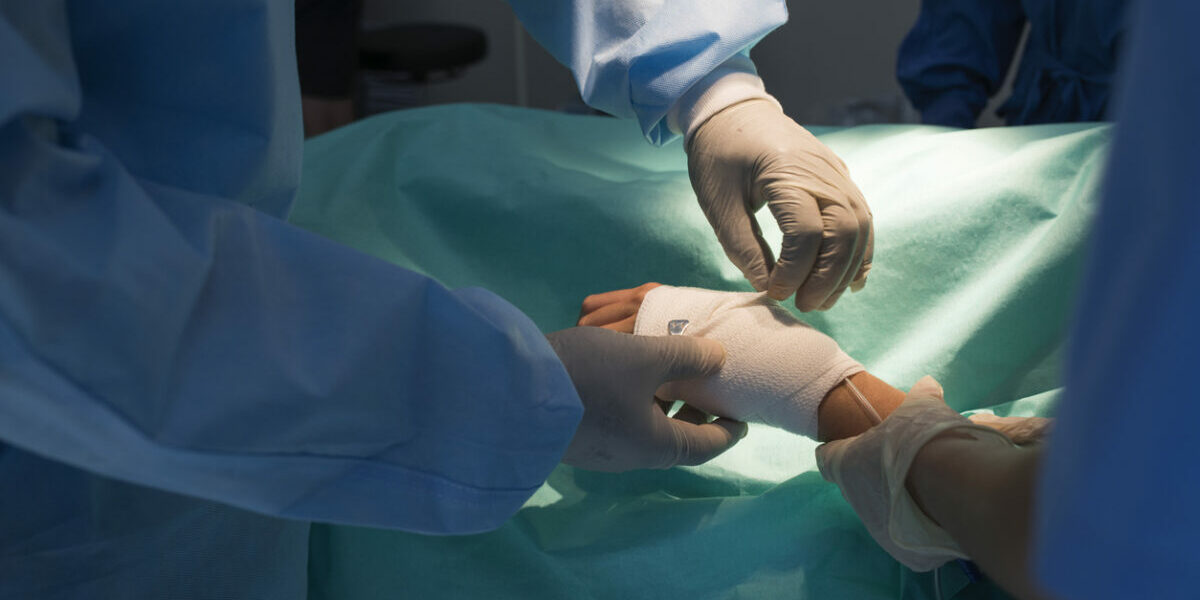In our country, we have super-speciality courses exclusive for hand surgery and many practising hand surgeons.

A hand surgery in process. (iStock)
It has been 50 years since the Indian Society for Surgery of the Hand (ISSH) was founded way back in 1973. In its initial years, hand surgery was not a well-known speciality.
Today, we have super-speciality courses exclusive to hand surgery and many practising hand surgeons in our country.
With science advancing every day, hand and microsurgery have also improved in the last few decades.
On the occasion of National Hand Surgery Day on 23 August, here is a look at some of the most common injuries and surgeries related to the hand.
Tendons are the extension of the muscle which attaches them to the bone and helps in the movements of the wrist and fingers.
Tendon injuries are common in road traffic accidents, industrial accidents, or domestic accidents.
Early identification and repair of these tendons will help patients get the full range of movements. In delayed presentations, we can still either repair it within two weeks or reconstruct using tendon grafts.
In very severe injuries, there are deficits of tendon availability wherein we can use tendon grafts from lower limbs. Tissue engineering is helping in making decellularised tendons from tissue banks as scaffolds.
Another aspect of tissue-engineered tendons is the addition of cells with regenerative and differentiation potential. These scaffolds have their own complications like disease transmission with natural scaffolds and rejection fears with allografts or synthetic scaffolds.
Nerve repairs are common procedures performed in hand surgery. To improve the results of these nerve repairs, we can do suture-less repairs using lasers and fibrin glue.
Nerve conduits have been in use for quite some time, and can be used for patients with segmental nerve defects.
Molecular and cell therapy to inculcate nerve growth factors to lower immunogenicity and improve regeneration.
Fractures of the scaphoid in the wrist are very common and are more commonly missed on X-Rays due to its peculiar anatomy. These fractures are diagnosed late and go into non-union.
These patients are at risk of decreased blood supply to the bone, and risk of avascular necrosis.
Recent methods of vascularised bone grafting or arthroscopic assisted management of these fractures have come to limelight.
Even in hand fractures, we have got very specific titanium plates and screws to treat these fractures and mobilize them early.
Most hand surgeries can be managed by local or regional anaesthesia as well as supraclavicular blocks.
Noted US surgeon Don Lalonde introduced wide awake surgery of the hand in 2011, where local infiltration to the surgical site is given, and the patient can even see the surgery and talk to the doctor.
The advantage of this method is we can assess the results of our surgery intraoperatively rather than waiting for a few weeks.
Hand transplantation is a procedure wherein a new hand — taken from a brain-dead patient willing to donate organs — is given to the patient.
This is a revolution in hand surgery as it has given hope to many patients who do not have hand and forearm either since birth or who lost them due to an accident.
Under scrutinised immunotherapy, such as tacrolimus and matching of histocompatibility, very good results are seen worldwide including in India.
Various surgical robots are being used in microsurgery and hand surgery such as Da Vinci and Zeus, for various procedures. It gives a 3-D visual acuity and good access in challenging locations.
Vessel anastomosis can be performed using robotics, nullifying the effects of intentional tremors, but the force to be applied and when to stop is difficult as it does not give tactile feedback.
Though it has got benefits high cost and the steep learning curve have limited its use in our country.
With advances happening so fast, it is not possible if the instruments and devices were not up to mark.
Microsurgery began well before the invention of the microscope. Surgeons used magnified lenses and loupes to operate.
Now we have got state-of-the-art technology. Loupes are also available in various magnifications and angles to ease the surgeon’s posture.
Operating instruments have also made a steep jump in the availability of various micro instruments like couplers for vessel anastomosis and tendon instruments like tendon braiders.
Wrist arthroscopy is now the treatment of choice for TFCC (Triangular fibrocartilage complex) injuries and carpal instabilities in the wrist.
Endoscopic carpal tunnel release is being used in a few centres in our country. These help in early recovery and rehabilitation especially in patients going for competitive sports.

Jul 26, 2024

Jul 26, 2024

Jul 26, 2024

Jul 26, 2024

Jul 26, 2024

Jul 25, 2024